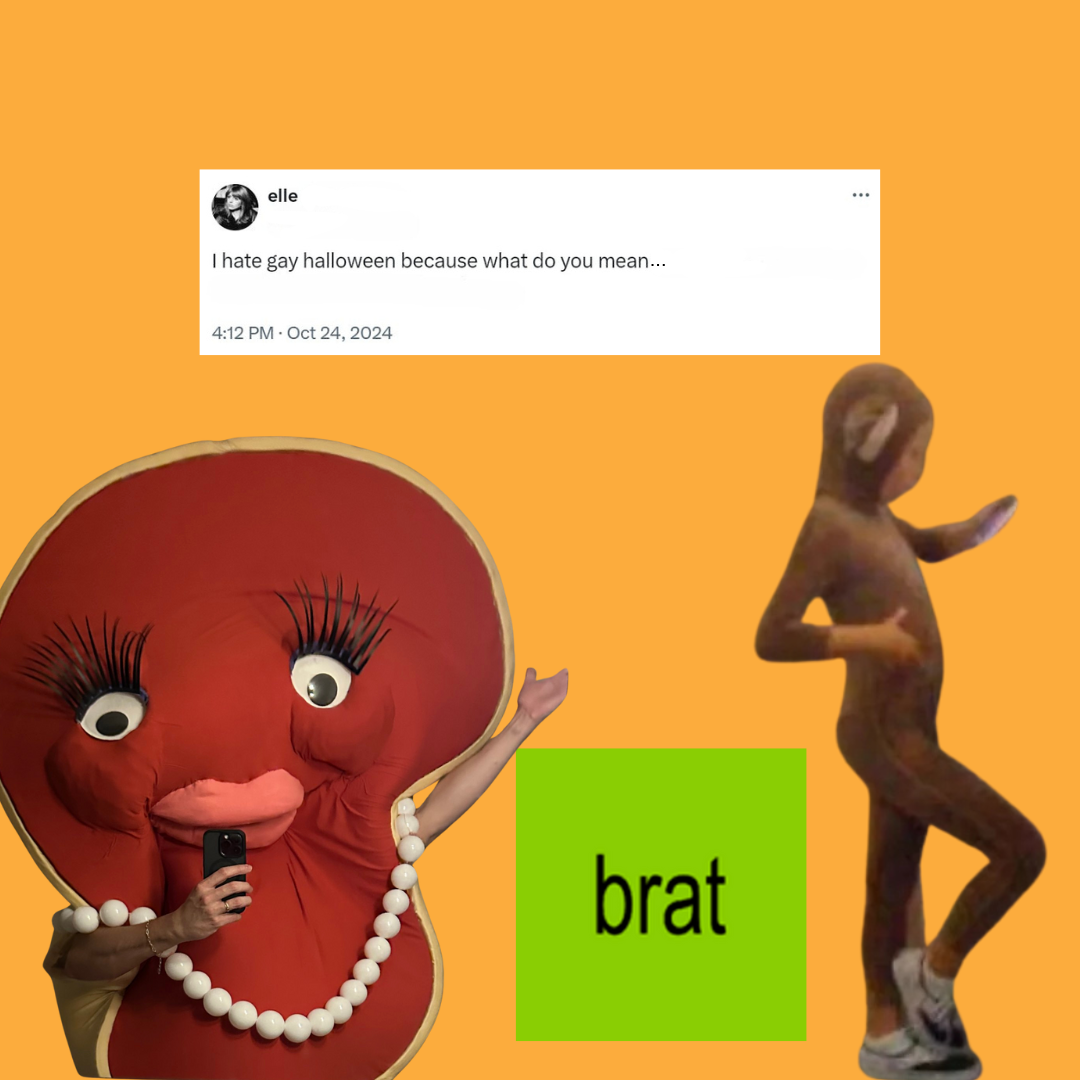
“Camp” is officially back this Halloween with the rise of popularity in niche, hyper-specific pop culture references known as “gay Halloween.” People have taken to various forms of social media to share their ideas, especially through X and TikTok. These pop culture references and memes often come from shows, artists, movies or moments in culture that are mainly seen in the queer community.
Creative costumes like the “Challengers” (2024) tennis ball and Chappell Roan and the passenger seat from her hit song “Casual” come from fan bases that mostly consist of members of the queer community. Gay Halloween has created a whole new range of costumes that has taken the holiday to a whole new level, and we should keep it this way. Halloween has often been widely loved by the queer community because it offers a place to express oneself without judgment.
The costumes that typically go viral online are sexualized versions of basic characters from a show or movie, but now we are seeing a wide range of concept costumes. Dressing as a niche queer icon allows people who are part of the LGBTQ+ community to find other people who are part of a similar fanbase as them. It is also important to note that with the rise of popularity of gay Halloween, it has started to go outside of the queer community.
Gay Halloween has created an entirely new set of standards for costumes. In the next few years, we will see an increase in fan base references, concept costumes and object costumes, no longer the surplus of costumes such as pirates, princesses and black cats. I hope to see costumes similar to what I saw this year: Charli xcx from a specific scene of music video “365,” Beyoncé’s horse from the album cover of “Cowboy Carter,” the infamous oompa loompa from “Willy’s Chocolate Experience” and Carrie and Berger’s known break up post-it note from “Sex and the City.
” These are all seen as important gay pop culture references that might seem to be “chronically online.” Social media has played a big role in gay Halloween this year. Costumes have gone viral on platforms like X with a caption saying, “I hate gay Halloween, what do you mean you’re.
..” with the niche pop culture reference.
The comments under these posts are supportive and understanding of the costume and also inspire others to embrace gay Halloween. Algorithms on social media can often create polarization in society, but with the new concept of gay Halloween, people feel welcomed and embraced by each other. Gen Z has always been comfortable with expressing themselves, and we are now seeing it shine through with Halloween as the generation matures enough to take control of their own costumes.
The creativity and imagination are inspiring and change the way that other generations see ours. As the generation that has been told to change the way society functions to change the world, I believe that it is important to do so while being able to express who we are free of judgment — and what better way to do that than through Halloween? Gay Halloween proves that changing the way society functions and altering the narrative of stereotypes can be done in a way that is silly, fun, and true to yourself. The queer community continues to push boundaries, create trends and transform our society, and gay Halloween is an exciting and unique way to prove that.
Nora Flannery, FCRH ’26, is a communications and media studies major from Chicago.














